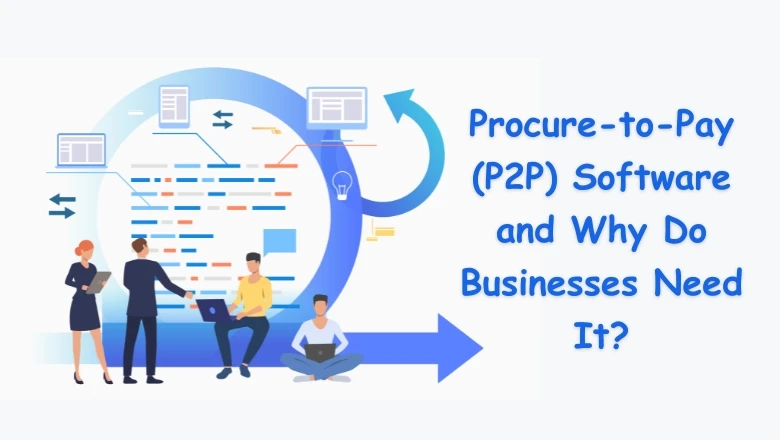Introduction
Managing procurement processes manually can be a time-consuming and error-prone task for businesses. From raising purchase requests to paying invoices, every step requires accuracy, transparency, and efficiency. This is where Procure-to-Pay (P2P) software comes into play, helping businesses automate and streamline the entire procurement cycle. In this blog, we’ll explore what P2P software is, its key benefits, and why businesses of all sizes need it.
What is Procure-to-Pay (P2P) Software?
Procure-to-Pay (P2P) software is a digital solution that manages the entire procurement process, from the initial requisition of goods and services to the final payment. It integrates various procurement functions such as purchase requests, approvals, supplier management, purchase orders, invoicing, and payment processing into a single, seamless workflow.
Key Features of P2P Software
- Purchase Requisition and Approval – Allows employees to request purchases with an automated approval process.
- Supplier Management – Centralizes vendor information and enhances collaboration.
- Purchase Order (PO) Automation – Automatically generates and tracks purchase orders.
- Invoice Processing – Matches invoices with POs and receipts to ensure accurate payments.
- Payment Processing – Enables secure and timely payments to suppliers.
- Analytics and Reporting – Provides real-time insights into procurement spend and supplier performance.
- Integration with ERP & Accounting Systems – Ensures smooth data flow between departments.
Why Do Businesses Need P2P Software?
1. Improves Efficiency and Reduces Manual Work
Manually handling procurement tasks can be overwhelming, leading to delays and errors. P2P software automates workflows, reducing paperwork, manual approvals, and data entry, making the entire process more efficient.
2. Enhances Cost Savings and Spend Control
Uncontrolled spending can lead to financial leakages. P2P software provides transparency in purchasing decisions, prevents unauthorized spending, and helps businesses negotiate better pricing with suppliers through centralized procurement management.
3. Strengthens Supplier Relationships
Managing multiple vendors can be challenging without a proper system. P2P software improves vendor communication, ensures timely payments, and enhances collaboration, leading to stronger supplier relationships and better service quality.
4. Ensures Compliance and Reduces Risk
Many businesses struggle with compliance issues due to a lack of visibility in procurement processes. P2P software enforces compliance by maintaining audit trails, tracking approvals, and ensuring adherence to internal and external regulations.
5. Enhances Transparency and Accountability
Every purchase transaction is tracked within the software, ensuring complete transparency. This helps businesses maintain accountability, prevent fraud, and conduct audits with ease.
6. Accelerates Invoice Processing and Payments
Delayed payments can impact supplier trust and business credibility. P2P software speeds up invoice approvals by matching invoices with purchase orders and receipts, reducing processing time and ensuring timely payments.
7. Provides Real-Time Data Insights
With built-in reporting and analytics tools, P2P software offers real-time insights into procurement performance, spending trends, and supplier efficiency. These insights help businesses make data-driven purchasing decisions and optimize their procurement strategies.
How P2P Software Works in a Business Environment
- Purchase Request: An employee raises a purchase request within the system.
- Approval Process: The request goes through automated approval workflows.
- Purchase Order Generation: Upon approval, a purchase order is created and sent to the supplier.
- Goods/Services Delivery: The supplier delivers the requested goods or services.
- Invoice Processing: The invoice is matched with the PO and receipt for verification.
- Payment Execution: Once verified, the payment is processed through the system.
- Data Reporting: The transaction details are recorded for future analysis and audits.
Conclusion
Procure-to-Pay software is a game-changer for businesses looking to streamline their procurement operations, reduce costs, and improve efficiency. By automating the entire procurement cycle, it minimizes manual work, enhances compliance, and provides real-time insights into financial transactions. Whether you run a small business or a large enterprise, implementing a P2P solution can help you achieve better control over your procurement processes and drive business growth.
Discover how our P2P solution can optimize your procurement workflow—Request a free demo today!


